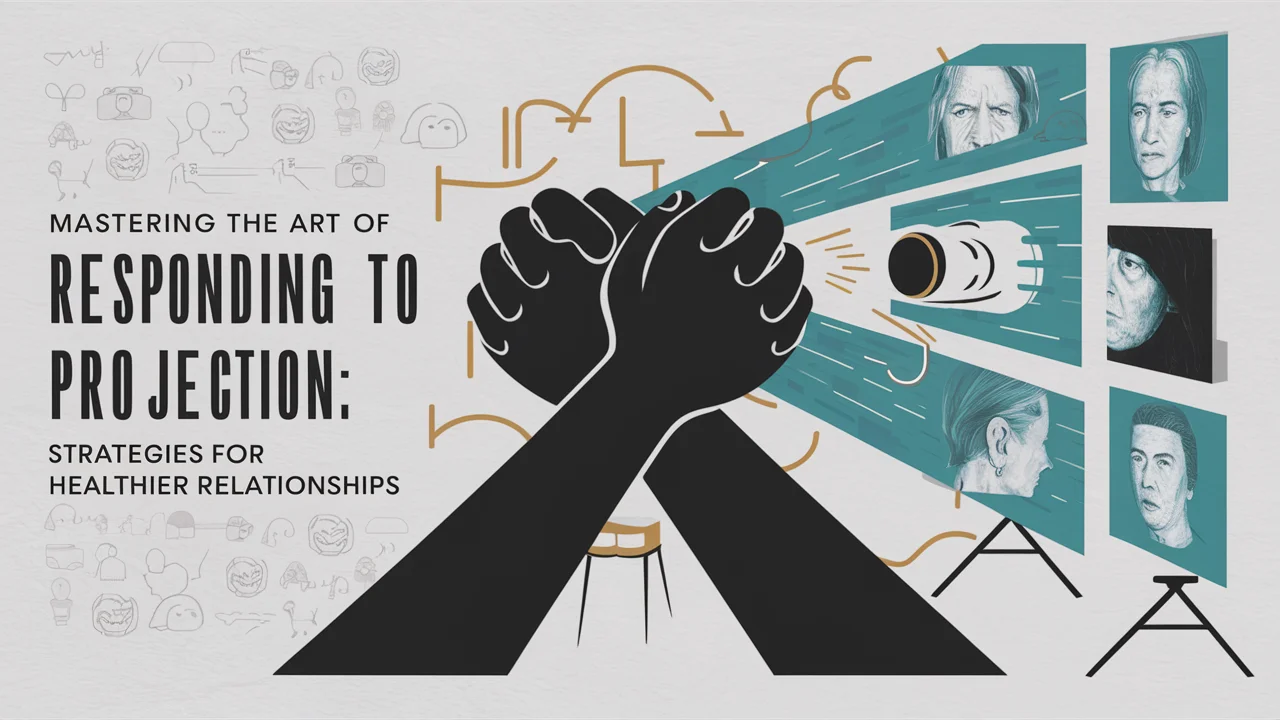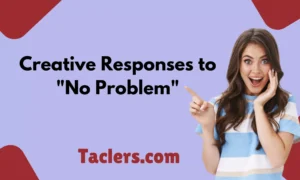Projection is a psychological defense mechanism where individuals attribute their own feelings, thoughts, or motivations to others. It’s a common but often unrecognized behavior that can create tension and misunderstandings in personal and professional relationships. Understanding projection and learning how to respond to it effectively can significantly improve the quality of your interactions and emotional well-being.
In this blog post, we will explore the concept of projection, how it manifests, and provide you with practical strategies to handle it. We’ll also dive into real-life examples to illustrate how these strategies can be applied. Let’s get started.
Understanding Projection
The Psychological Basis of Projection
Projection is deeply rooted in psychology, primarily as a defense mechanism. Sigmund Freud, the father of psychoanalysis, first introduced the concept of defense mechanisms as ways people protect themselves from unpleasant emotions. Projection occurs when someone is unable to accept certain feelings or thoughts about themselves and instead, attributes them to someone else.
For example, a person who is insecure about their abilities may accuse others of being incompetent. This allows them to avoid facing their own insecurities. Projection often operates unconsciously, making it difficult for individuals to recognize that they are projecting their feelings onto others.
Common Examples of Projection
Projection can manifest in various ways, often in subtle forms. Here are some common scenarios where projection is likely to occur:
- Blaming Others for Personal Failures: An employee who is underperforming at work might project their frustration by accusing a colleague of being lazy or unmotivated.
- Accusing Someone of Dishonesty: A person who feels guilty about being dishonest might accuse others of lying or hiding the truth.
- Assuming Others Share Your Feelings: Someone who is upset might assume that others around them are also in a bad mood, leading to unnecessary conflicts.
These examples highlight how projection can distort reality and strain relationships. Recognizing projection when it happens is the first step toward addressing it.
Impact of Projection on Relationships
Projection can have serious consequences on relationships, both personal and professional. When someone projects their feelings onto others, it can lead to misunderstandings, resentment, and a breakdown of trust. Over time, if projection goes unchecked, it can cause significant emotional harm and erode the foundation of a relationship.
Statistics on Projection and Relationships
Studies show that projection is one of the most common defense mechanisms used in interpersonal conflicts. According to research published in the Journal of Personality and Social Psychology, individuals who frequently project are more likely to experience relationship dissatisfaction and higher levels of conflict.
Responding to Projection

Why It’s Important:
When someone projects their feelings onto you, your initial reaction might be defensive or emotional. However, staying calm is crucial in such situations. Reacting emotionally can escalate the situation, making it more difficult to address the underlying issue.
Practical Tips:
- Deep Breathing: Take a few deep breaths before responding. This simple technique can help you maintain composure and think clearly.
- Pause Before Responding: Give yourself a moment to collect your thoughts. A brief pause can prevent you from saying something you might regret.
- Neutral Body Language: Maintain an open and neutral posture. Avoid crossing your arms or clenching your fists, as these can be perceived as defensive.
Staying calm allows you to approach the situation with a clear mind, increasing the chances of a positive outcome.
Reflect on the Comment
Analyzing the Situation:
Before responding, it’s essential to reflect on the comment made by the other person. Ask yourself whether the comment aligns with what you know about yourself or if it seems out of character.
Questions to Ask:
- “Does this comment resonate with my actual behavior or feelings?”
- “Is this a recurring theme in my interactions with this person?”
- “Could this be more about them than it is about me?”
Taking a moment to reflect helps you determine whether the comment is genuinely constructive or if it’s a projection of the other person’s feelings.
Use “I” Statements
How to Communicate Effectively:
Using “I” statements is a powerful way to express your feelings without escalating the situation. These statements focus on your perspective, making it clear that you’re sharing your feelings rather than accusing the other person.
Examples:
- “I feel uncomfortable when you say that because…”
- “I noticed that you’ve been upset, and I want to understand how I can help.”
- “I think it’s important that we discuss how we’re both feeling.”
By using “I” statements, you can communicate effectively without making the other person feel attacked or defensive.
Set Boundaries
Importance of Boundaries:
Setting boundaries is essential in preventing further projection. Boundaries help protect your emotional well-being and clarify what behaviors are acceptable.
How to Set Boundaries:
- Be Clear and Consistent: Clearly state what you will and will not tolerate. For example, “I understand you’re upset, but I’m not comfortable with you taking it out on me.”
- Explain the Consequences: Let the person know what will happen if the boundary is crossed. For instance, “If this continues, I’ll need to step away from the conversation.”
- Reiterate as Needed: Sometimes, boundaries need to be reinforced. Don’t hesitate to restate your limits if they’re not respected.
Boundary-Setting Scripts:
Here are some scripts you can use to set boundaries effectively:
- “I need to take a break from this conversation. Let’s revisit it when we’re both calmer.”
- “I’m not comfortable with how this conversation is going. Can we change the subject?”
- “It’s important to me that we treat each other with respect, even when we disagree.”
Boundaries create a safe space for healthy communication and prevent the negative effects of projection from taking root.
Suggest Help
Why Suggest Help:
Projection can sometimes be a sign of deeper emotional or psychological issues. In such cases, suggesting professional help can be beneficial for both parties.
Approaching the Topic:
Suggesting help should be done with care and sensitivity. It’s important not to come across as judgmental or dismissive.
Tips for Suggesting Help:
- Express Concern, Not Criticism: Frame your suggestion in a way that shows you care about the person’s well-being. For example, “I’ve noticed you’ve been stressed lately. Have you thought about talking to someone about it?”
- Offer Resources: Provide information about counselors or support groups if you think it might help. You could say, “I’ve heard good things about this counselor. Would you be open to talking to them?”
- Be Supportive: Let the person know that seeking help is a positive step, not a sign of weakness. You might say, “I think it’s really strong of you to consider getting support.”
Sample Phrases:
Here are some non-confrontational ways to suggest help:
- “It might be helpful to talk to someone about how you’re feeling.”
- “I’ve noticed you’ve been under a lot of stress. Maybe speaking with a therapist could help you process everything.”
- “I’m here for you, but it might also help to get a professional perspective.”
Suggesting help is a delicate process, but when done with empathy, it can open the door to healing and growth.
Walk Away if Needed
Knowing When to Disengage:
There are times when the best response to projection is to disengage. If the conversation is going nowhere or becoming toxic, walking away might be the healthiest option.
Tips for Disengaging:
- Exit Gracefully: If you need to leave a conversation, do so respectfully. For example, “I think it’s best if we take a break from this discussion. Let’s talk again later.”
- Don’t Feel Guilty: Remember, walking away doesn’t mean you’re giving up. It’s a way to protect your mental and emotional health.
- Focus on Self-Care: After disengaging, take time to care for yourself. This could involve journaling your thoughts, practicing mindfulness, or talking to someone you trust.
Self-Care After Walking Away:
Here are some self-care strategies to employ after disengaging:
- Journaling: Write down your thoughts and feelings to help process the experience.
- Mindfulness: Practice mindfulness techniques, such as deep breathing or meditation, to center yourself.
- Reach Out: Talk to a friend or family member for support and perspective.
Walking away can be empowering and allows you to maintain control over your emotional well-being
Examples in Action
Real-Life Scenario 1: Responding to a Projecting Colleague at Work
Situation: Jane, a team leader, accuses her colleague Mark of being lazy and not pulling his weight on a project. Mark knows he’s been working hard, but Jane’s criticism feels personal.
Response:
- Stay Calm: Mark takes a deep breath and reminds himself not to take Jane’s comments personally.
- Reflect on the Comment: Mark considers whether Jane’s accusation is valid or if it might be more about her own insecurities.
- Use “I” Statements: Mark responds, “I feel that I’ve been contributing effectively to the project. Let’s discuss how we can improve our teamwork.”
- Set Boundaries: Mark asserts, “I’m open to feedback, but I’d appreciate it if we could discuss this respectfully.”
- Suggest Help: Mark notices Jane has been stressed lately and suggests, “Maybe we could both benefit from discussing this with our manager to ensure we’re on the same page.”
- Walk Away if Needed: If the conversation becomes unproductive, Mark decides to disengage and revisit the discussion later.
Real-Life Scenario 2: Dealing with a Projecting Family Member
Situation: Sarah’s mother frequently criticizes Sarah for not being ambitious enough, even though Sarah is content with her career choices.
Response:
- Stay Calm: Sarah remains calm and doesn’t let her mother’s comments upset her.
- Reflect on the Comment: Sarah recognizes that her mother’s comments might be more about her own regrets or unfulfilled ambitions.
- Use “I” Statements: Sarah responds, “I’m happy with where I am in my career, and I’d appreciate your support.”
- Set Boundaries: Sarah sets a boundary, saying, “I understand you have your opinions, but I’d prefer we don’t discuss my career choices if it’s going to lead to conflict.”
- Suggest Help: Sarah gently suggests, “It might help to talk to someone about your own goals and how you feel about them.”
- Walk Away if Needed: If her mother continues to project, Sarah decides to leave the conversation and revisit it when her mother is more receptive.
Conclusion
Projection is a complex psychological phenomenon that can complicate relationships and communication. By understanding projection and learning how to respond to it, you can improve your interactions and protect your emotional well-being. Whether it’s staying calm, setting boundaries, or suggesting help, these strategies empower you to handle projection in a healthy and constructive way.
Remember, the goal is not to change the other person but to manage your response in a way that maintains your peace of mind and fosters healthier relationships. With practice, you’ll become more adept at recognizing projection and responding effectively, leading to more fulfilling and harmonious interactions.

Ethan Richards, a distinguished writer at Taclers.com, excels in blending sharp insights with engaging storytelling. His background in sociology adds depth to his analysis of human reactions, making his articles both thought-provoking and entertaining. Explore the world of reactions with Ethan and see familiar moments in a whole new light.










